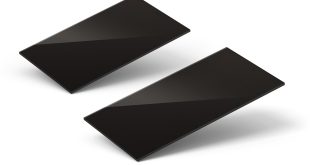 The global market for batteries used in wearable electronics will grow more than tenfold in just four short years, propelled by portable new products especially suitable for active sports and fitness lifestyles, according to a new report from IHS Technology. According to the report worldwide revenue for wearable electronics batteries is projected to reach $77 million by 2018, up from $6 million by year-end in 2014.
The global market for batteries used in wearable electronics will grow more than tenfold in just four short years, propelled by portable new products especially suitable for active sports and fitness lifestyles, according to a new report from IHS Technology. According to the report worldwide revenue for wearable electronics batteries is projected to reach $77 million by 2018, up from $6 million by year-end in 2014.
This year marks the first time of significant volume for the market from a virtually non-existent base last year, and revenue will continue to climb very rapidly in the next few years ahead. By 2018, industry takings will have grown nearly 120 percent from 2014 levels.
“Wearable electronics will be the key to sustaining the current very-high-growth levels of battery revenue in consumer electronics,” said Thomas McAlpine, power supply and storage component analyst for IHS. “The tremendous expansion in store will come thanks to an increase in the shipments of smartwatch products, wearable health monitoring devices and smart glasses.”
Annual shipments for wearable electronic devices are expected to reach an estimated 56 million units by 2018, fuelling continued demand for the batteries that power these products, Mc Alpine noted.
2013 was an important year for wearable electronics with many of the leading consumer electronics suppliers bringing out their first smartwatch products. Also on the horizon now are yet-to-be-launched smartglass products for the mass market, with Google currently running a trial program for its Google Glass, and an official product release anticipated for later this year.
Of the total number of batteries expected to be installed in wearable electronics by 2018, lithium polymer batteries will take the predominant share, accounting for 73 percent of total wearable electronics battery revenue. Lithium polymer batteries are the preferred choice as they are lighter in weight and can be manufactured into a wider range of shapes and sizes, compared to traditional lithium-ion batteries.
Smartphone and tablet PC demand will continue to drive the majority of revenue growth in the lithium battery market for portable electronics over the next couple of years, with the combined shipments of these devices projected to grow 46 percent from 2013 to 2015. However, shipments will decrease from 2015 onward, and coupled with projected erosion in the average selling prices of lithium battery cells, growth will decelerate for the overall lithium battery market for portable consumer electronics.
This means that the emergence of new applications in the market is critical, McAlpine remarked. “Lithium batteries will remain an integral component for innovation in consumer electronics. But to achieve sustained market growth, new wearable electronics and other devices need to be introduced and adopted by the mass market, similar to what is occurring now in recently emerging product categories.”
 CIE Components in Electronics
CIE Components in Electronics



